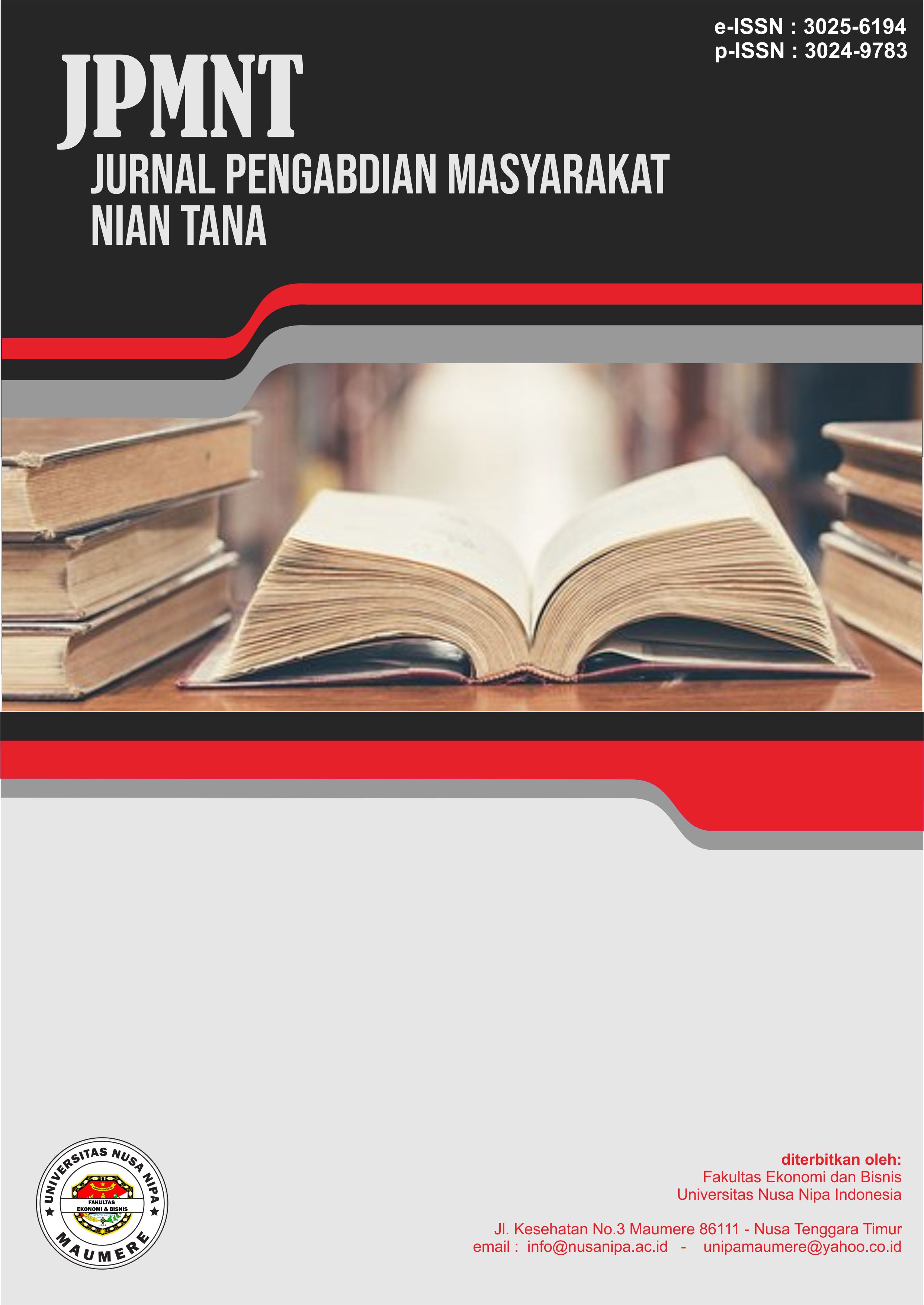Pembelajaran Bahasa Inggris yang Menyenangkan melalui Pemanfaatan Moodel Circuit Learning pada Siswa di SDK Roworeke 2
DOI:
https://doi.org/10.59603/jpmnt.v3i3.934Keywords:
Vegetable Vocabulary, Circuit Learning, Picture Card Media, Fun Learning, Ice BreakingAbstract
English as an international language needs to be introduced early to elementary school students. However, first-grade students often have short attention spans and require enjoyable and active learning approaches. This Community Service Program (PkM) aimed to improve the understanding of basic English vocabulary through the use of engaging learning media, namely colorful origami paper. The program was conducted through a one-day intervention using fun and interactive methods such as singing, folding, coloring, and guessing games related to vocabulary themes (colors and objects). The result showed that students were enthusiastic and actively involved in the activities. Evaluation revealed that 80% of the students were able to correctly recall at least 5 new English words. This indicates that colorful origami can serve as an effective and appealing medium for English learning among first graders.
References
Anisnaini, E. (2021). Penerapan media kartu dalam pembelajaran bahasa pada siswa MTs (Tesis, IAIN Purwokerto).
Arends, R. I. (2012). Learning to teach (9th ed.). New York: McGraw-Hill.
Bakar, N. A., & Awang, M. K. (2017). The effectiveness of flashcards in teaching vocabulary. International Journal of Education and Literacy Studies, 5(1), 41–47.
Cameron, L. (2001). Teaching languages to young learners. Cambridge University Press.
Dimyati, & Mudjiono. (2009). Belajar dan pembelajaran. Jakarta: Rineka Cipta.
Dornyei, Z. (2001). Motivational strategies in the language classroom. Cambridge University Press.
Halimah, N. N., & Riyadi, A. R. (2023). Penerapan model problem-based learning untuk meningkatkan hasil belajar materi bahasa Inggris siswa sekolah dasar. Dalam Seminar Nasional Pendidikan Dasar (Vol. 7, hlm. 200–208). Universitas Muhammadiyah.
Hamruni. (2012). Strategi pembelajaran. Yogyakarta: Fakultas Tarbiyah UIN Sunan Kalijaga.
Harmer, J. (2007). The practice of English language teaching (4th ed.). Pearson Education Limited.
Hosnan, M. (2014). Pendekatan saintifik dan kontekstual dalam pembelajaran abad 21. Bogor: Ghalia Indonesia.
Mulyasa, E. (2013). Pengembangan dan implementasi Kurikulum 2013. Bandung: Remaja Rosdakarya.
Nana Sudjana. (2005). Dasar-dasar proses belajar mengajar. Bandung: Sinar Baru Algesindo.
Nephawe, F. T., & Lambani, M. N. (2021). Use of question-and-answer method in teaching English prepositions to primary school learners. International Journal of Language and Linguistics, 8(3), 91–98.
Rorimpandey, R. (2020). Application of visual media pop-up book in English learning in elementary school. Journal of English Culture, Language, Literature and Education, 4(1), 27–36.
Sardiman, A. M. (2018). Interaksi dan motivasi belajar mengajar. Jakarta: Rajawali Pers.
Sari, H., & Astuti, D. (2019). The effect of using songs on vocabulary mastery of young learners. Journal of English Language Teaching and Linguistics, 4(2), 123–133.
Sugiyono. (2017). Metode penelitian pendidikan: Pendekatan kuantitatif, kualitatif dan R&D. Bandung: Alfabeta.
Wena, M. (2010). Strategi pembelajaran inovatif kontemporer: Suatu tinjauan konseptual operasional. Jakarta: Bumi Aksara.
Yuliani, K., & Hartanto, W. (2015). Penerapan model project based learning untuk meningkatkan hasil belajar dan kreativitas siswa sekolah dasar. Jurnal Pendidikan dan Kebudayaan, 21(3), 264–275.
Yunus, M. M., & Salehi, H. (2012). The effectiveness of using games in teaching English vocabulary to young learners. International Journal of Social Science and Humanity, 2(6), 580–586. https://doi.org/10.7763/IJSSH.2012.V2.145
Downloads
Published
How to Cite
Issue
Section
License
Copyright (c) 2025 Jurnal Pengabdian Masyarakat Nian Tana

This work is licensed under a Creative Commons Attribution-ShareAlike 4.0 International License.





